Supermercado Ahyeon (아현슈퍼)
5.6Km 2024-08-14
Dongseohak-dong 854-7, Wansan-gu, Jeonju-si, Jeonbuk-do
‘아현슈퍼’는 2022년도 방영된 tnN 드라마 ‘스물다섯 스물하나’의 1990년대를 배경으로 한 촬영을 하기 위해 레트로한 옛날 분위기가 그대로 담긴 슈퍼로 꾸몄다. 드라마 촬영 후 철거되었으나 인기에 힘입어 다시 설치되었다. 이곳은 운영 중인 슈퍼가 아닌 빈 집 세트장 이며 주인공들이 앉아서 도란도란 이야기를 나누던 노란 평상이 포토 스폿이다. 이곳에서 키스에 대한 나희도(김태리)와 백이진(남주혁)의 오해 장면, 백이진(남주혁)이 오토바이로부터 나희도(김태리)를 지켜낸 장면이 촬영됐다.
Estadio de la Copa Mundial de Jeonju (전주월드컵경기장)
5.6Km 2024-04-07
Girin-daero 1055, Deokjin-gu, Jeonju-si, Jeonbuk-do.
El Estadio de la Copa Mundial de Jeonju fue completado en octubre de 2001 para el Mundial de Fútbol FIFA 2002. Su diseño original proviene de un abanico tradicional coreano conocido como hapjukseon. Este abanico representa la belleza de los diseños tradicionales coreanos. La superficie del estadio es de 562,929 m² y está compuesto de 6 pisos y 1 piso subsuelo. Esta estructura tiene una capacidad de 42.477 personas. Debido a la cercanía de la cancha y la tribuna, permite presenciar un vívido partido desde cualquier punto del estadio.
Museo de Historia de Jeonju (전주역사박물관)
5.7Km 2024-04-07
Ssukgogae-ro 259, Wansan-gu, Jeonju-si, Jeonbuk-do.
El Museo de Historia de Jeonju se fundó en el año 2002 para hacer llegar al público la larga y fascinante historia de Corea. Este museo está dividido en diferentes áreas de exposiciones y está abierto permanentemente.
La primera exposición es la de la Revolución Agraria Donghak (levantamiento del año 1894 contra los intentos de colonización japonesa). Este suceso cumplió un papel muy importante en el desarrollo de la ciudad de Jeonju. La segunda área de exposición está dedicada a las milicias movilizadas. También hay un área especial dedicada al Movimiento por la Independencia contra el imperio japonés. Hay muchas otras exposiciones con los temas claves y sucesos importantes de la historia de Corea.
Museo Nacional de Jeonju (국립전주박물관)
5.9Km 2024-10-15
Ssukgogae-ro 249, Wansan-gu, Jeonju-si, Jeonbuk-do.
Fue inaugurado en el año 1990 y es un organismo perteneciente al Ministerio de Cultura, Deporte y Turismo. Colecciona y preserva los patrimonios culturales de Jeonbuk-do, y se dedica a las actividades académicas de investigación y exposición. Se esfuerza activamente para ser el centro de la cultura regional en los intercambios nacionales e internacionales. En noviembre del 2002 se abrió al público la sala de educación social, que es un espacio destinado a las actividades culturales participativas, permitiendo así la oportunidad de experimentar la cultura tradicional. El museo posee aproximadamente 30.000 reliquias del pasado, entre ellas se encuentran piezas encontradas en la región de Jeonbuk-do, pinturas budistas, vasijas de porcelana, artesanías en metal, pinturas y caligrafías, libros clásicos, etc., entre otros. Unas 1.300 piezas se encuentran expuestas permanentemente en 5 salas interiores y exteriores del museo. También tiene varias exhibiciones especiales relacionadas a la cultura regional de Jeonbuk-do. Además presenta varios eventos culturales y programas educativos, para que los visitantes puedan experimentar la historia en el museo.
Santuario Chimyeongjasan (치명자산성지)
5.9Km 2025-08-13
Baramssoeneun-gil 89, Wansan-gu, Jeonju-si, Jeonbuk-do.
Se encuentra localizado en la cima del monte Seungamsan, que es el escenario de fondo del pabellón histórico Hanbyeokdang, ubicado en el área sudeste de la ciudad de Jeonju. Hacia el costado de una gran cruz de piedra, con aproximadamente 4 m de altura, se ha fundado una iglesia católica sobre una roca tallada. En este santuario descansan los restos de la pareja de Yu Jung-cheol (Juan) y Lee Sun-i (Rugalda), y el resto de los miembros familiares. Yu Hang-geom, el primer fiel católico de Corea, y padre de Yu Jung-cheol, nació en el pueblo Chonam, Iseo-myeon, de Wanju-gun. Después de sufrir opresiones y persecuciones por cuestiones religiosas, fueron decapitados en las afueras de Nammun. La pareja de Yu Jung-cheol y Lee Sun-i, luego de mantener la virginidad por sus ideales religiosos hasta después de 4 años de haberse casado, finalmente fueron condenados a muerte. La enorme cruz de piedra puede ser observada desde las distintas partes del área, y es famosa como lugar de peregrinación de los cristianos. Los túmulos de la pareja se encuentran enterrados en la parte más alta del santuario, y hacia un lado está presente la iglesia conmemorativa. Por encima de donde se encuentra la tumba de la pareja, se ve asomando la roca milagrosa (de Jesús y María), designado Patrimonio Natural por la excelencia de la escultura. Otra de las bellezas para apreciar es el camino que se presenta desde el comienzo hasta la cima de la montaña, que se asemeja a una alfombra de flores.
Arboreto de Jeonju en la Corporación Coreana de Autopistas (한국도로공사 전주수목원)
6.6Km 2025-07-10
Beonyeong-ro 462-45, Deokjin-gu, Jeonju-si, Jeonbuk-do
Sejonggwan of the Royal Room/ 왕의지밀 세종관
7.1Km 2025-08-12
5218-22, Chunhyang-ro, Wansan-gu, Jeonju-si, Jeonbuk-do
+82-63-284-1004
This hanok (traditional Korean house) hotel is located near Jeonju Hanok Village. The hotel has enjoyed great popularity among the tourists visiting Jeonju since its opening in 2018, for its convenient location of only a 7-min drive away from Jeonju Hanok Village and its faithful recreation of hanok’s beauty with modern sensibilities. The hotel complex stands on a plot of land spanning 19,840 m2, containing 11 residential buildings and other facilities. As the name of the hotel indicates, each building in the hotel is named after the kings of the Joseon Dynasty.
Sejonggwan is named after King Sejong. Sejonggwan has eight rooms, divided between Gold and Silver Rooms. Each room is a self-contained unit made up of bedrooms and restrooms, furnished with a combination of hanok’s unique charms and modern comfort. The view of the wooden exposed beams (Gold Room), paintings on the wall, and the view of the nature beyond the window wall recreate the unique scenery of the hanok, while amenities such as TV, refrigerator, and air conditioning offer a comfortable stay.
Other facilities inside the hotel complex include the spacious parking lot, an elegant hanok cafe, and the Convention Center, housing family-size Daejanggeum Hall and Hunminjeongeum Hall, a large hall suited for seminars. It takes only 10 min by car to reach any tourist sites near Jeonju Hanok Village from the hotel.
Munjonggwan of the Royal Room (왕의지밀 문종관)
7.2Km 2025-07-23
5218-20, Chunhyang-ro, Wansan-gu, Jeonju-si, Jeonbuk-do
Wangui Jimil Moonjonggwan (‘Royal Room of King Munjong’) in Jeonju, Jeonbuk-do, is a hotel that combines hanok style with modern convenience - one of a group of hotels named after Joseon kings. There are eight guestrooms, divided into Gold and Silver class, and all equipped with bathrooms and toilets. Rooms have exposed beams and traditional furniture, and the scenic views and chirping of insects beyond the large windows add to the charm. Additional facilities include a hanok cafe, a restaurant, and a convention center. Guests can reach anywhere in Jeonju Hanok Village in about 10 minutes by car.
Sukjonggwan of the Royal Room / 왕의지밀 숙종관
7.2Km 2025-08-11
5218-14, Chunhyang-ro, Wansan-gu, Jeonju-si, Jeonbuk-do
+82-63-284-1004
This hanok (traditional Korean house) hotel combines the unique aesthetics of hanok and modern comfort. Its location near Jeonju Hanok Village, the central point of Jeonju tourism, gives it excellent access to destinations in Jeonju. As evident from its name, the hotel promises a comfortable stay in a hanok since its opening in 2018. The hotel complex stands on a plot of land spanning 19,840 m2, containing 11 residential buildings that are named after the Joseon kings and other facilities.
The building Sukjonggwan contains four rooms. Each room is a self-contained unit made up of bedrooms and restrooms, furnished with a combination of hanok’s unique charms and modern comfort. Grade 1 Gold and Silver Rooms in particular have two beds and a whirlpool bathtub for the comfort of the guests. The view of the wooden exposed beams (Gold Room) speaks to the unique characteristics of hanok, while wooden pieces of furniture give the room an elegant finish. The scenery beyond the window wall is also the pride of the hotel.
The hotel has about 150 parking spots, a hanok cafe, and the Convention Center with spaces such as Daejanggeum Hall, Saimdang Hall, Chungmugong Hall, and Hunminjeongeum Hall. Samtaegeuk and Samjogo Restaurants are designated as COVID-19 Safe Restaurants by the city of Jeonju. It takes only 10 min by car to reach most tourist sites in Jeonju Hanok Village.
Jeongjogwan of the Royal Room / 왕의지밀 정조관
7.3Km 2025-08-13
5218-10, Chunhyang-ro, Wansan-gu, Jeonju-si, Jeonbuk-do
+82-63-284-1004
This hanok (traditional Korean house) hotel shows a different interpretation of hanok’s traditional beauty from Jeonju Hanok Village. The name of the hotel encapsulates Jeonju’s spirit as a city of tradition and art, and the exemplar of the state of Joseon. The hotel complex stands on a plot of land spanning 19,840 m2, containing 11 residential buildings and other facilities like hanok restaurants. Each residential building is named after the kings of the Joseon Dynasty. Jeongjogwan contains six rooms,
all built to modern comfort for all age groups. Grade 2 Silver and Gold Rooms, which can house up to 6 guests, are especially popular for families. The rooms combine modern comfort with hanok aesthetics, like wooden exposed beams and wooden furniture, which help to fill the room with the elegant fragrance of wood.
The hotel has about 150 parking spots, a hanok cafe, and the Convention Center with spaces such as Daejanggeum Hall, Saimdang Hall, Chungmugong Hall, and Hunminjeongeum Hall. Samtaegeuk and Samjogo Restaurants are designated as COVID-19 Safe Restaurants by the city of Jeonju. Jeonju Hanok Village is reachable by car in about 7 min.

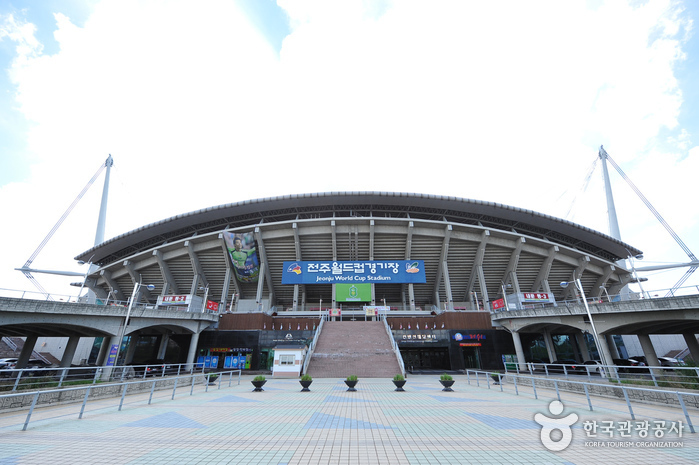
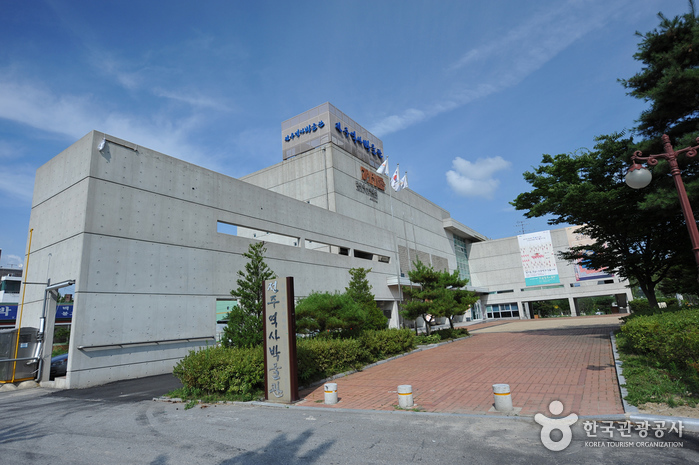

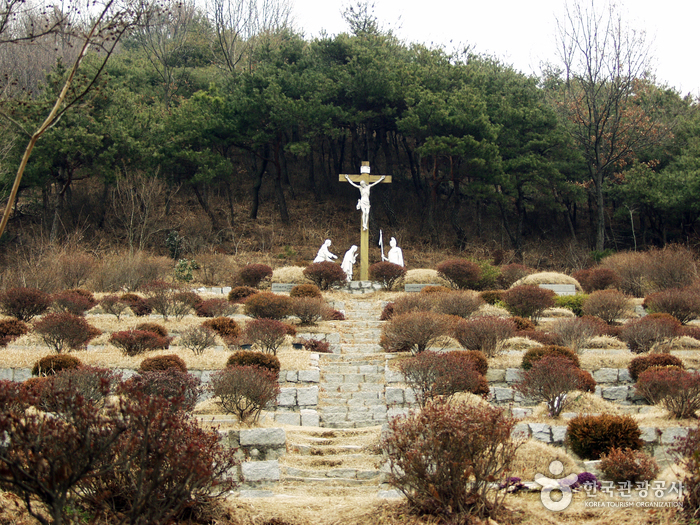
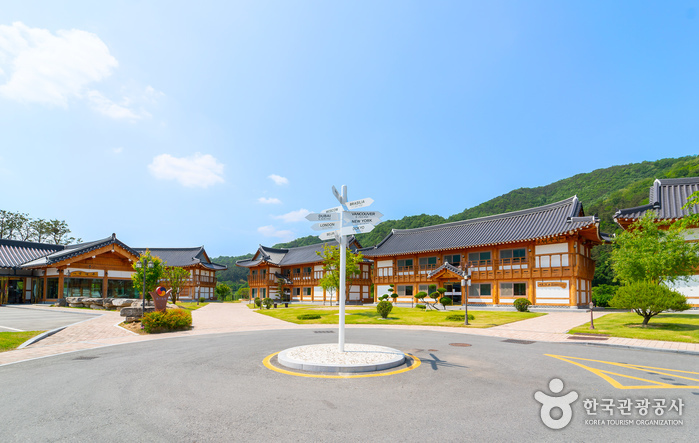

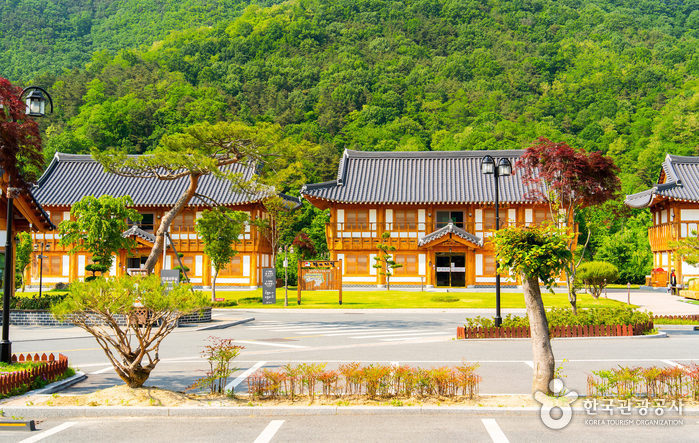
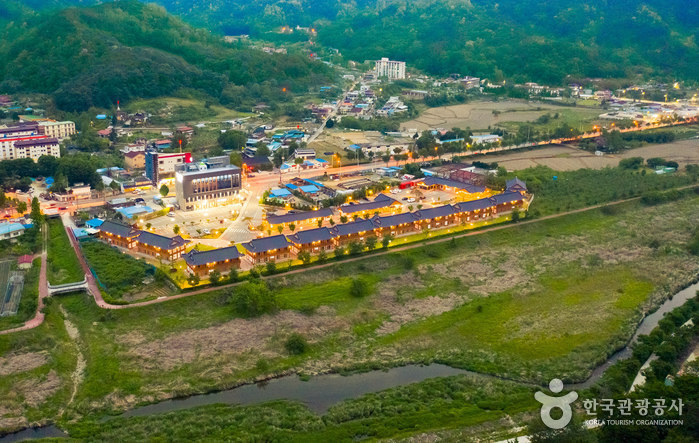
 Español
Español
 한국어
한국어 English
English 日本語
日本語 中文(简体)
中文(简体) Deutsch
Deutsch Français
Français Русский
Русский